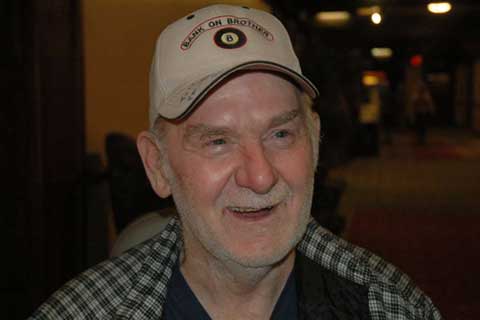Keith was a better player at a younger age than I was because of his surroundings
Boy, there's nothing sweeter than seeing Keith fire in those tough, long shots at warp speed with the cue ball softly floating into place.
For those who have a strong opinion about it, yet haven't given it a chance, TOI isn't just a sales gimmick, nor is it the magic solution to everything in pool. But it does work and mastering it leads to a powerful and intimidating style of play that players like CJ and Keith used to gain a big advantage over the rest of the field for years.
Yes, Keith and I had the opportunity to hang around a lot of seasoned
Road Players because we were both "child prodigies". Keith was a better player at a younger age than I was because of his surroundings and influences in LA as opposed to mine in Green City Mo. (population 629 with no stop lights). I caught up eventually, once I had the mentorship of "Omaha John," Dalton Leong, Rusty B. "Big Brad", and playing Vernon Elliot, David Matlock, Johnny Archer, Kim D., Keith McCready, Wade Crane, Reid Pierce, Country Calvin, Buddy Hall, Weldon Rogers.....etc. etc. etc.
Back then if you you were young and had a lot of talent the older
Road Players would take you under their wing and steer you into situations that made everyone money.....sometimes tens of thousands.
I believe Keith will agree that Jr. Weldon (Rogers) was one of those type Road Men that knew how to get the cash. He was one of the all time best "one handed" players and also a champion level player on the bar table. He also played the same
"dead ball" style that I teach through the TOI Technique.
Jr. Weldon took Keith to several big money matches through the years and Keith usually
"took down the dough"......Jr. and I also traveled a lot and would average around 2k a day for weeks at a time.....he often told me how much my game reminded him of Keith's, especially the shot making.
There were several well known Road Players that used the TOI style, although it wasn't considered a technique (at that time) it was passed along by example more than explanation. Omaha John contacted me a few months ago raving about the TOI and I had to remind him that he actually used to play that way (he had an accident and can only play left handed now). It's funny, we will forget some of these things if it's not kept "fresh".
It takes more than I would have imagined to actually teach someone this "art form," and it can be done if the student is willing to change the way they approach the game.......at least put their "old ideas" on the shelf for a few days to legitimately give 'The Touch of Inside' room to grow mentally.
One thing's for sure, if a player's mind is filled with too much "ineffective inventory" there's no room to experience the TOI. 'The Game is the Teacher'

